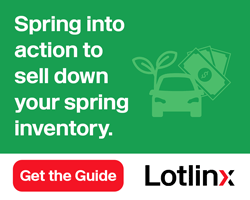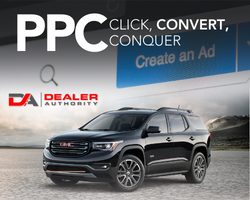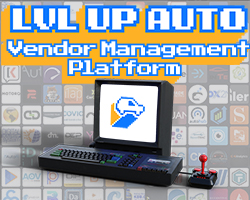The Kumbaya Strategy – Why Your Ineffective Internet Team/BDC Thinks They’re Doing a Good Job
Imagine a world where no one ever told you “no.”
Relaxing and enjoyable, right?
Now imagine working on an internet sales team or in a sales BDC and never hearing a prospect tell you “no” over the phone.
Ahh, you’re now fully entrenched in the Kumbaya Strategy. A sales existence where you never hear anyone telling you “no.”
Pure bliss… you were really helpful.
Pure bliss… you made a real connection with this prospect.
Pure bliss… they really seemed interested and they liked you.
Pure bliss… you feel great.
Pure bliss… that is, until you get your paycheck.
The Kumbaya Strategy in Automotive Sales
If most people bought cars, we wouldn’t need sales managers, salespeople, or a sales BDC. We’d price our inventory like Walmart and people would just come in, pick the one they like, pay at the register, and drive home.
While this might be the (distant) future for automotive retail, it’s not the reality today. Today, most prospects still need help buying a car… and this is great news for those truly willing to help them buy.
Using the Kumbaya Strategy, you helped them get all their questions answered and then some. You built some great rapport and then some. Heck, you kind of made a friend, didn’t you?
So… why didn’t they buy from you? Why didn’t they show up for that “appointment” you think you set? Why have they stopped taking your calls?
Unfortunately, using the Kumbaya Strategy only helped them eliminate you and your dealership from their consideration set. But, hey, they didn’t tell you “no” did they?
“When Would You Like to Come In?”
Most buyers need just a bit more than help. Most need you to take charge, be direct, and guide them through to the sale. Plainly stated, they need your dealership to sell them a car. While they don’t want to be sold, most simply will never pull the trigger without your help. This starts, of course, by getting a warm butt in a seat. This starts by setting an appointment that shows… on time.
With the Kumbaya Strategy you never hear “no” because you never genuinely asked for the sale; you never directly asked for a real appointment. After nine long minutes of answering (mostly smokescreen) questions from the prospect, you gather up the nerve to finally ask for the appointment:
You say: “So, when would you like to come in for a test drive?”
They reply: “Maybe this weekend.”
You say: “Well, we open on Saturday at 9; would sometime in the morning work for you?”
They reply: “Yeah, I can make it around ten.”
Then you think, “Ahh, pure bliss… they didn’t tell me ‘no,’ and they’re coming in on Saturday to buy a car!”
Do you have an appointment? No; because they’re not showing. Are they going to buy from your dealership? No, they’re going to “hold off for now” or buy somewhere else. Why? Because you never really invited them in, did you?
All you really accomplished using the Kumbaya Strategy is to encourage most prospects to eliminate your dealership from their consideration set. Oh, and you created the need for worthless follow-up.
You’ll call them on Saturday to see why they missed their appointment. They won’t take that call.
You’ll follow this with a quick text. They’ll reply “STOP,” or they won’t reply at all.
You’ll call them on Monday to try to reschedule. They won’t take that call either.
In fact, if you’re a dutiful follower of the Kumbaya Strategy, you’ll likely make another five or six calls in an attempt to provide them even more information and to reschedule that “appointment” you think you set.
I Want to Hear “No”
Instead of a 9-minute call of back and forth helpfulness, why not ask for the appointment up front? Why not try to get them to the next step in the buying process? Why not ensure that any appointment you set is going to show?
Because you’re afraid of hearing “no.”
I want to hear “no.” I want to hear “no” because I want to set real appointments that show and buy. I want to hear “no” so I can get to the real objections or questions they have.
Moreover, I want to hear “no” on the very first call, so I don’t have to continue to phone this “active” prospect who won’t take my calls and won’t respond to my emails or texts.
The more times I hear “no,” the more appointments I’ll set that show and buy.
If you’re not hearing “no” you’re not asking for the appointment.
But… Kumbaya, Right?
“But Steve, my customers love me. They love how helpful I am. They love how I ask them if they need any more information. They love how I build so much rapport over the phone.”
They may love you but please stop calling them customers… they’re not your customers until they buy from you. Right now, they’re prospects trying to buy a car. Your “helpfulness” took them out of the market for now. Or worse, helped them buy somewhere else.
“Okay, but Steve, I know that if I was looking for a car, I would appreciate a BDC agent or internet salesperson who didn’t pressure me into setting an appointment, and instead answered all my questions.”
Stop building and using processes and word tracks for what you would want if you were the customer; and start building and using them to sell cars.
You Should Be Helpful
Don’t get me wrong, you should be helpful. Additionally, you should be courteous and respectful. Finally, you should answer all their questions.
Of course, for nearly all your prospects, all the information they need is online. They’ve already done their own needs analysis, product selection, and feature presentation. Now, they’re trying to buy a car.
They’re calling you or submitting a lead because they want your help with the next step. They don’t know how this works and they fear sales pressure. But… and this is critical… they want you to invite them in to see the vehicle; to test drive and see if they can make a deal.
Ask for the appointment first. Then, if they have questions, they’ll ask them.
Ask for the appointment first. Then, if they need more information, they’ll tell you.
When you start with anything other than trying to set a real appointment that shows, you’re just setting yourself up for failure. Of course, because you never heard “no” you feel great… again, until you get your paycheck.
The stats are clear: You sell exactly 0% of the Phone Ups and Email Ups who don’t show. But, as anyone with more than a week in the car business knows, magic can happen when you get a warm butt in a seat.
Good Selling!
Want to stop employing the Kumbaya Strategy and start setting real appointments that show? Check out my free 17-part video series: Appointment-Driven Communications.









